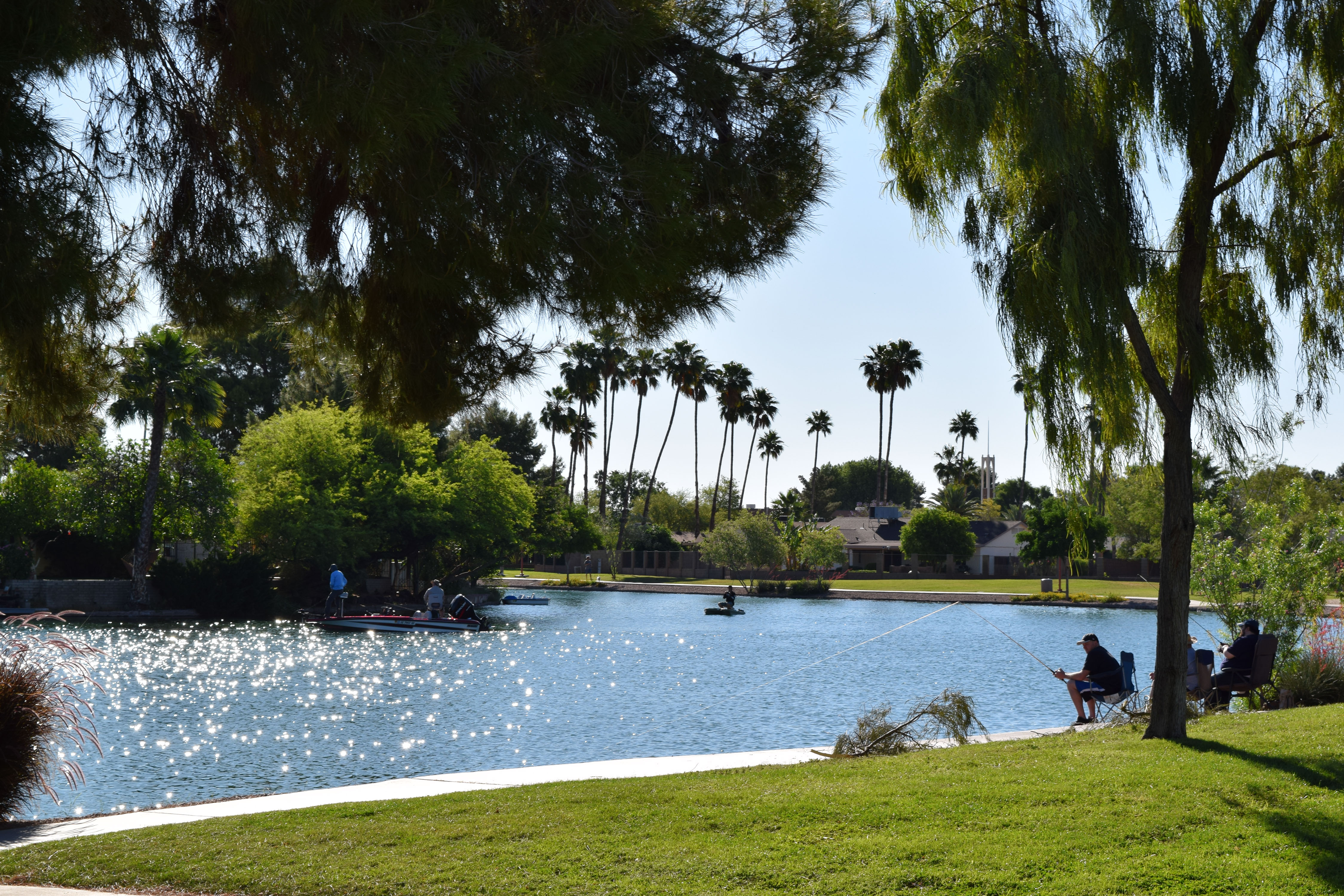
3 minute read
WATER & LAKES MANAGEMENT OF PLANTS AND INSECTS IN LAKE COMMUNITIES
When managing aquatic plants and insects in lake communities, lake managers consider three methods of control:
1. Manual control, which involves using equipment to remove aquatic weeds and plants.
2. Biological control involves using aquatic organisms to consume aquatic weeds and non-desirable insects.
3. Chemical control is effective but less desirable in terms of cost and duration of control. Several species of fish are stocked in the lake to minimize the use of insecticides and herbicides, while other species are in the lake to provide game fish for a catch-and-release fishing program.
Goldfish (Carassius auratus) the fish are considered exotic; only sterile fish can be stocked. The grass carp is very tolerant of temperature extremes that are common in Arizona lakes. This fish is a voracious eater of aquatic weeds. It can become very large, weighing up to 40 pounds when adequate food is available. The fish will serve as a mechanism for controlling submerged macrophytes and algae mats in the lake.
Fathead Minnow (Pimephales promelas):
Goldfish are members of the minnow family. They are highly adaptable animals, capable of tolerating a wide variety of chemical conditions, temperatures, foods, and spawning conditions. They tend to plow along the bottom of a pond to dislodge food. This action is advantageous because the larva (immature form) of the midge fly lives in the upper layer of sediment at the lake bottom. Thus, goldfish are an important natural predator of the midge. If the midge larvae are consumed, the adult swarms along the lake will be reduced.
Grass Carp or White Amur (Ctenopharyngodon idellus)
The grass carp or White Amur is a hardy species that originated in the rivers of Asia (The Amur River). It was first introduced into the United States in 1963 because
Fathead minnows feed on detritus and algae that feed on the soft bottom of lakes. They will also consume insects and larvae, including those of mosquitoes and midges, near the water surface. They are food for most predacious fish. The nesting habits of the fish involve the eggs being attached to an object situated somewhere above the lake bottom, typically to the underside. The open tubes of the artificial habitat should provide ideal sites for egg laying.
Redear Sunfish (Lepomis microlophus):
These sunfish tend to feed breed and generally remain in deeper waters. As biological control agents, they feed on microcrustaceans, chironomid (midge fly) larvae, and clams.
Zach Hache
Aquatic Consulting (www.aquaticconsulting.com)
Zach is an experienced Field Biologist with a demonstrated history of wetland and arid environmental projects.








